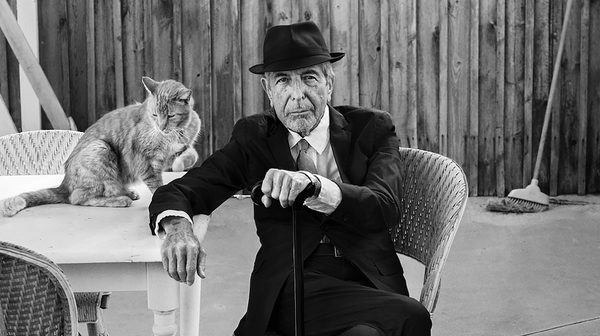Leonard Cohen wrote around 150 verses to Hallelujah, or so the scholars claim.
The beloved Canadian folk singer, who fused Jewish mysticism with pop mythology for a global audience, wrote several hit songs over his 50-year career, including many, such as Who By Fire and You Want It Darker, that are unmistakably Jewish in content. But none of them were as successful, or as pored-over, as Hallelujah, which has been covered around 300 times and played at weddings, funerals, church services and every possible occasion in between.
With its allusions to King David, and Samson and Delilah, questioning of a higher purpose and obscure but tantalising lyrics, few works by a Jewish artist have been subject to so much scrutiny and interpretation – much to the bafflement of its composer.
The new documentary Hallelujah: Leonard Cohen, A Journey, A Song does not recount all 150 verses, despite how fervently some of Cohen’s more devout acolytes may long to hear their minor falls and major lifts. But it does play Hallelujah many, many times, and allows some of the artists who have covered it, including Brandi Carlile and Rufus Wainwright, to explain what the song has meant to them.
Importantly, Hallelujah the film seeks to explore the song’s relationship not only to its creator, but also to Judaism in general.
Directors Daniel Geller and Dayna Goldfine, inspired by the non-fiction book The Holy or the Broken by Alan Light, use interviews with Cohen’s close friends, creative partners and lovers to explore both the song’s and Cohen’s legacies. Other documentarians and authors have tread this ground before, exploring specific chapters of his story like his Greek Isle romance with Marianne Ihlen in the 1960s and his Israel concerts during the Yom Kippur War.
But the framing device of a single song affords unique narrative opportunities. The film structures Cohen’s life into the periods before and after Hallelujah, released on 1984’s Various Positions album when Cohen was already 50. It shows how his Jewish upbringing in Montreal and love of questioning certain aspects of the faith, including how he “was touched as a child by that kind of charged speech I heard in the synagogue”. played a pivotal role in its creation (his faith was strong but he needed proof).
Cohen began work on Various Positions when he was in his 40s – the time when, according to Jewish tradition, Jews may begin studying Kabbalah.
Facing the end of his relationship with partner Suzanne Elrod and searching for a way to signify that the former poet and ’60s icon was turning over a new leaf, Cohen also briefly debated changing his name to September, which his rabbi, Mordecai Finley, notes in the film roughly corresponds with the Hebrew month of Elul, which signifies renewal.
Those new beginnings, the film argues, were best symbolised with Hallelujah: a blaze of light in every word. But nothing in Cohen’s life came easy, and the song’s road to popularity wasn’t straight. Columbia Records opted not to release Various Positions in the United States, and the song languished in obscurity as a Cohen deep cut until first Bob Dylan and then John Cale revived it.
It wasn’t until the young Jeff Buckley discovered and did his own variation of Cale’s recording in 1994 (while Cohen, discouraged by the music industry, had decamped to a Zen monastery) that Hallelujah became the phenomenon it is today. New generations embraced Buckley’s haunted, ethereal take on the lyrics, and his death at a young age added to the song’s mystique. The Cale cover’s prominent exposure in Shrek in 2001 didn’t hurt, either.
As the influence of the song spins far away from this Montreal Jewish troubadour, and he loses his life savings after being swindled by his long-time business manager, the film offers a memorable sequence that doesn’t feature Cohen at all. It’s a montage of 2000s-era talent show contestants offering up endless covers of Hallelujah, backed by bombastic strings and synthesisers, lodging the song firmly in the American canon by any means necessary.
And while the initial versions of the song incorporated stanzas that mixed both Cohen’s spiritual and carnal musings, the American Idol and X Factor renditions on parade are decidedly G-rated and devoid of Cohen’s trademark doubt and ambiguity: they couldn’t feel, so they tried to touch.
What the film winds up showing is the song’s steady march toward secularisation.
Who does Hallelujah belong to, at the end of the day? Is it even Jewish? Is it even Cohen’s?
The film spins out its influence and then tries to run it back. But when one hears the song enough times, in enough different settings, and realises it’s touching everyone who hears it on some deep, imperceptible level, it becomes something else: a piece of art that simply came into the world, perhaps, as the song itself hints, through divine providence.
JTA
Hallelujah: Leonard Cohen, A Journey, A Song is now showing in cinemas across Australia.


comments